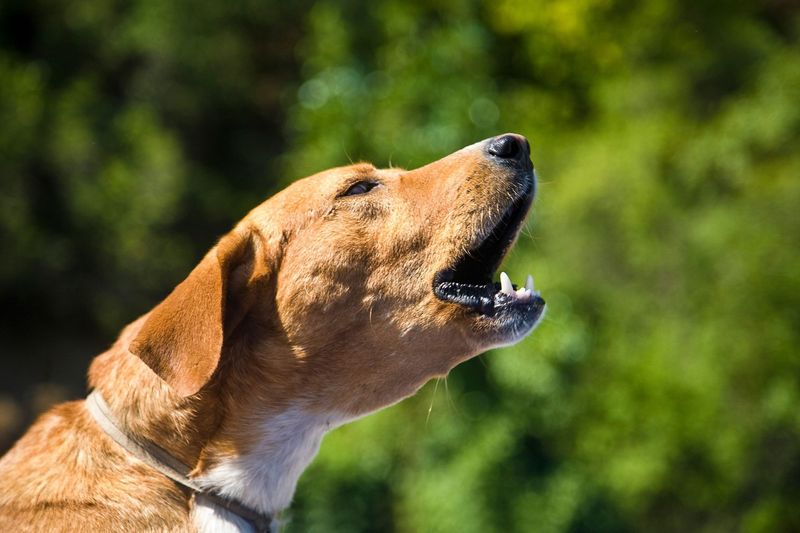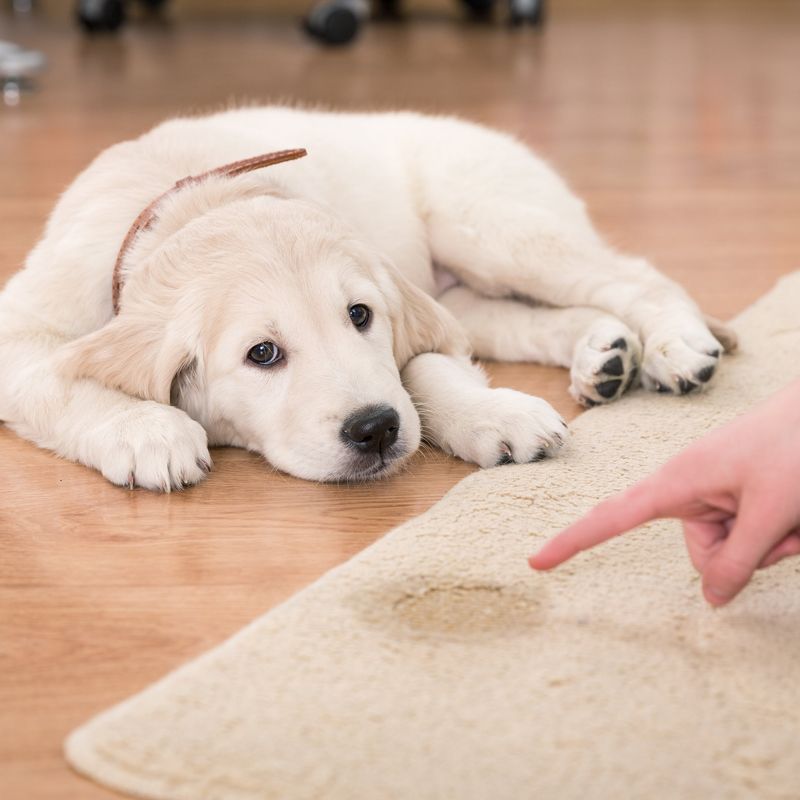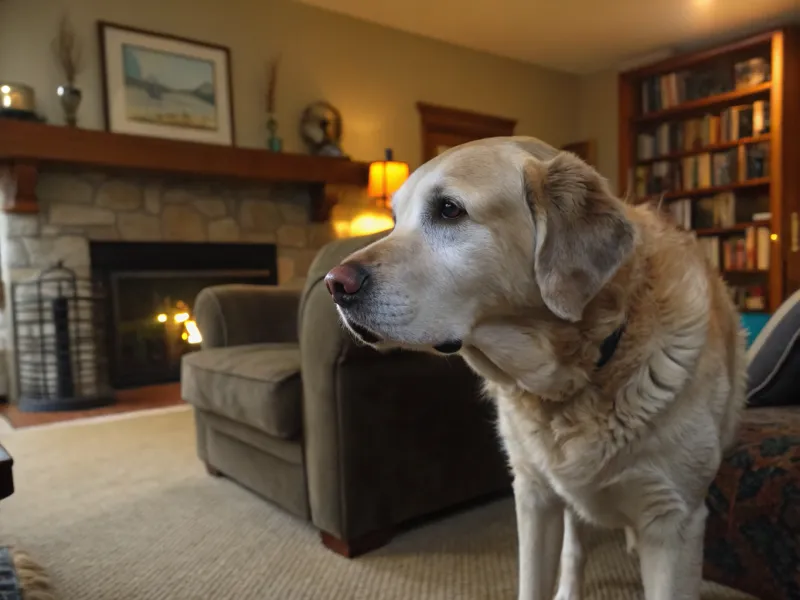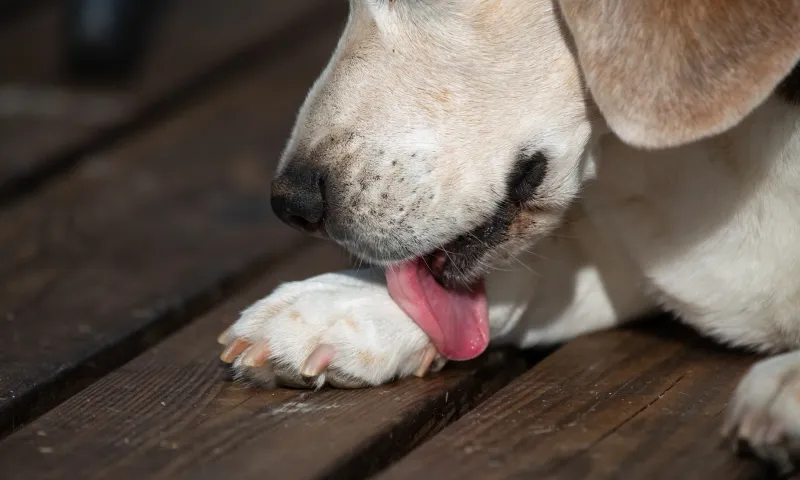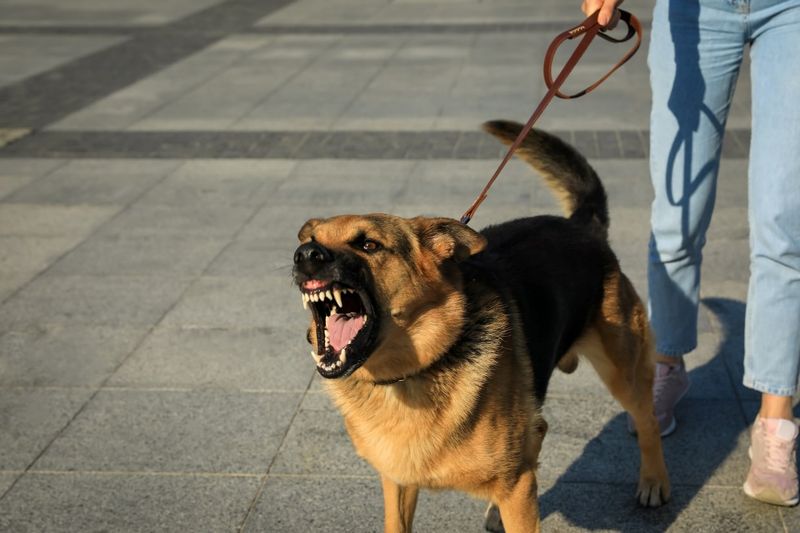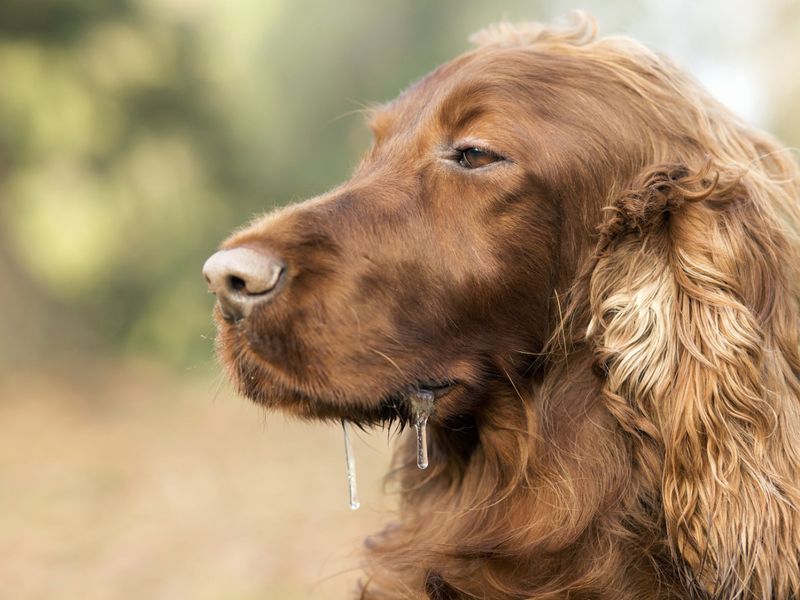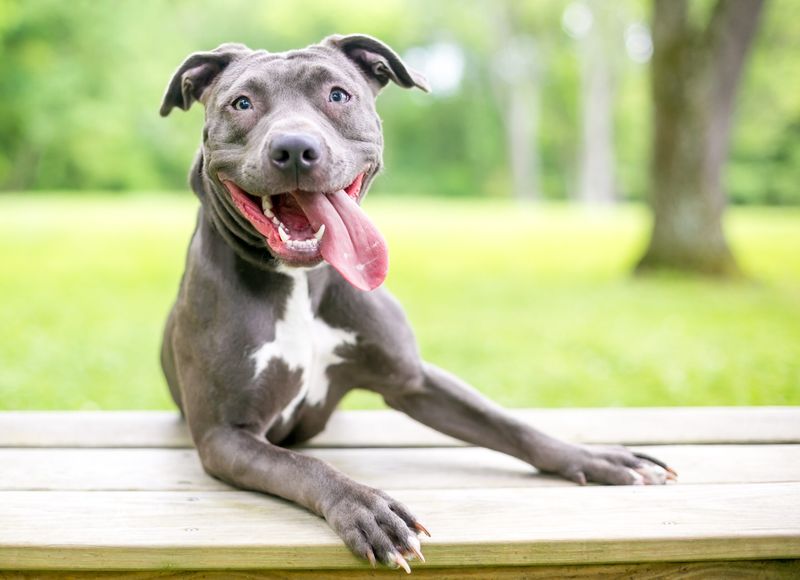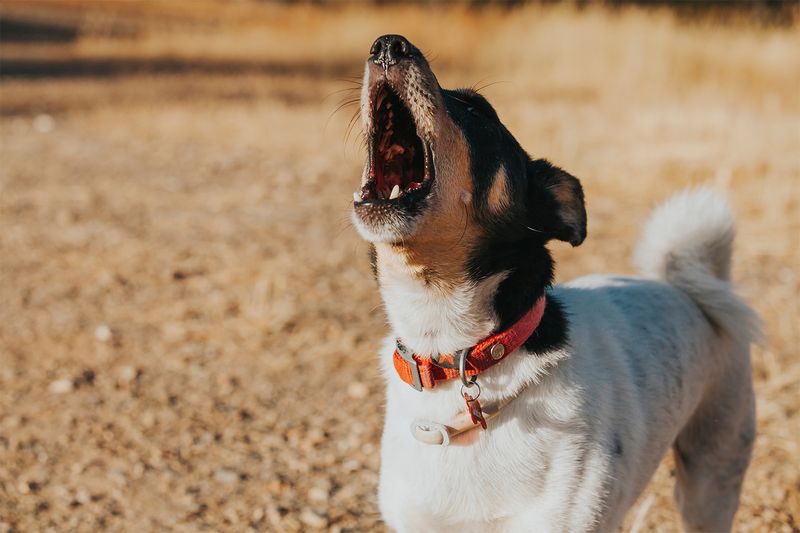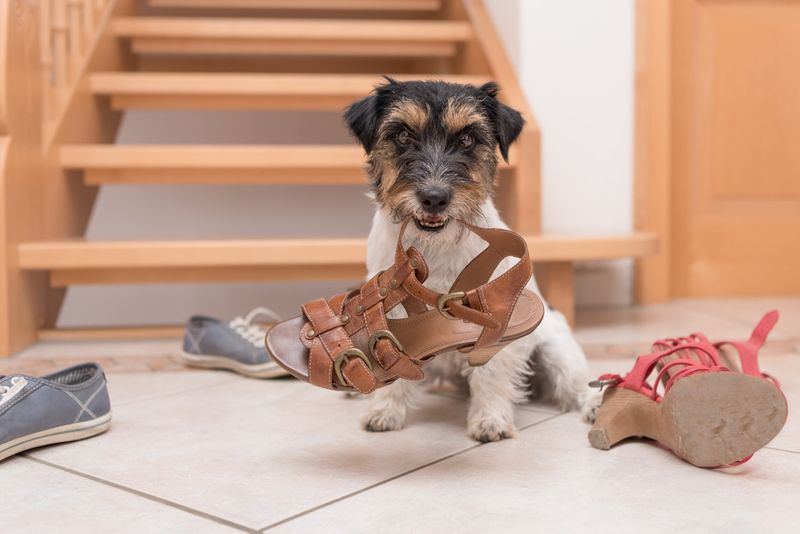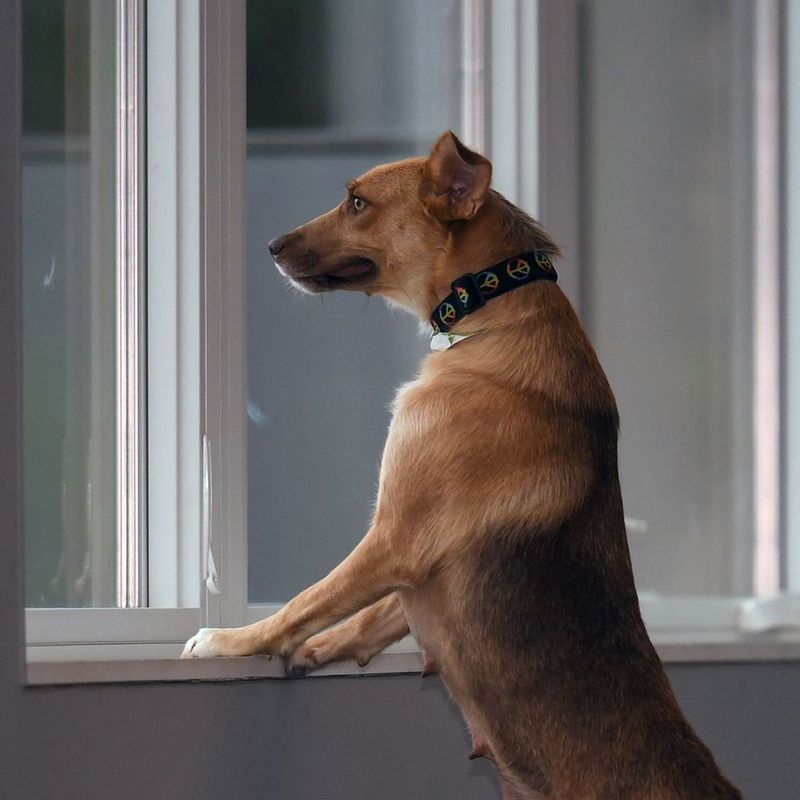Discover the often subtle signs that your beloved canine companion may be struggling with anxiety. Recognizing these red flags early can make a significant difference in your dog’s well-being. From changes in behavior to physical symptoms, we will explore 16 key indicators and provide actionable advice on how to help your furry friend overcome anxiety.
1. Excessive Barking
Excessive barking can be a sign of anxiety in dogs. If your dog seems to bark more than usual, especially at seemingly random stimuli, anxiety could be the cause. Pay attention to when, where, and why your dog barks to identify patterns.
Consider whether changes in their environment or routine could be contributing factors. Providing a quiet and calm space can help. Employ training techniques that reward quiet and calm behavior. Consulting with a professional trainer might also be beneficial, especially if the barking is accompanied by other anxiety symptoms.
2. Destructive Chewing
Destructive chewing is more than just a nuisance; it can be a cry for help. Dogs that chew excessively may be attempting to cope with anxiety. Identify what triggers this behavior by observing your dog’s routine and environment.
Provide appropriate chew toys to redirect the behavior. Regular exercise and mental stimulation can also help alleviate anxiety. If the problem persists, consult a veterinarian or a pet behaviorist to explore further solutions. Remember, punishment can increase anxiety, so focus on positive reinforcement and patience.
3. Urinating Indoors
Indoor urination in a house-trained dog is a red flag for anxiety. This behavior often appears in response to stress triggers such as thunderstorms, fireworks, or changes in the household.
Observe the circumstances that lead to these incidents and try to minimize stressors. Providing a safe, comfortable environment is crucial. Consult with a veterinarian for further guidance, especially if medical issues might be involved. Training techniques that focus on positive reinforcement and routine can help your dog regain confidence and reduce anxiety-induced accidents.
4. Pacing and Restlessness
Pacing and restlessness are classic signs of anxiety. If your dog seems unable to settle, especially in familiar surroundings, they may be experiencing stress. These behaviors often accompany separation anxiety or environmental changes.
To help your dog, provide a consistent routine and ensure they have plenty of exercises. Calming aids, like anxiety wraps or pheromone diffusers, might be effective. For severe cases, professional advice from a vet or behaviorist could be necessary. Monitoring your dog’s behavior can help identify triggers and tailor solutions.
5. Excessive Licking
Excessive licking, especially of paws or body, can indicate anxiety in dogs. This compulsive behavior often serves as a self-soothing mechanism, similar to nail-biting in humans.
Check for any physical irritants or allergies first. If none are present, focus on reducing stress in the household. Regular exercise and mental activities can distract your dog from compulsive behaviors. Consulting with a vet can provide additional insight, especially if anxiety is suspected. Addressing the root cause is key to calming your dog’s anxious licking.
6. Hiding or Escaping
An anxious dog may hide or try to escape situations that cause fear. This behavior is often seen during loud noises like thunderstorms or fireworks.
Creating a safe space where your dog can retreat during stressful times is vital. Comfort them with their favorite toys or blankets. Training sessions that focus on desensitization and positive reinforcement can gradually reduce anxiety. If your dog frequently attempts to escape, secure your home and yard to prevent accidents. Professional training may also be beneficial for addressing this behavior.
7. Loss of Appetite
A sudden loss of appetite in dogs can be a sign of anxiety. If your dog ignores their meal, especially during stressful situations, anxiety might be at play.
Try to determine any recent changes that might be causing stress. Providing a calm and quiet eating environment can help. Consult your veterinarian to rule out any medical issues. Gradually reintroduce favorite foods and treats to make mealtime enjoyable again. If anxiety is confirmed, behavioral therapy or calming supplements might be recommended.
8. Aggression
Aggression can sometimes stem from anxiety. If your usually calm dog starts showing signs of aggression, such as growling or snapping, consider anxiety as a possible cause.
Identify the triggers and try to avoid them. Professional training focused on reducing anxiety and managing aggression can be helpful. Use positive reinforcement to encourage calm behavior. Never punish aggressive behavior, as it can escalate anxiety. If needed, seek advice from a veterinarian or animal behaviorist to develop a tailored plan for your dog’s needs.
9. Excessive Drooling
Excessive drooling can be an indicator of anxiety in dogs. This physical symptom often appears when a dog feels stressed or threatened.
Observe your dog’s environment to identify potential stressors. Avoid or minimize exposure to known triggers. Offering a comfortable and secure space can reduce stress. In cases where drooling persists, consult with a veterinarian to rule out any underlying health issues. Addressing anxiety with behavioral therapy or calming techniques can help manage this symptom effectively.
10. Panting
Panting is a normal dog behavior, but if it occurs excessively without physical exertion, it may signal anxiety. Look for patterns, such as panting during car rides or when left alone.
Ensure your dog remains cool and hydrated, but observe if anxiety might be the root cause. Training and desensitization techniques can help manage your dog’s stress in specific situations. If panting persists, consulting a veterinarian can provide insights into both behavioral and medical causes.
11. Excessive Sleeping
While dogs do sleep a lot, excessive sleeping might indicate anxiety. Anxious dogs may retreat to sleep as a way to escape stress.
Observe any changes in your dog’s sleeping patterns and overall activity level. Ensure they have a balanced routine of exercise and rest. Providing mental stimulation can encourage a more active lifestyle. Consult a vet to rule out health issues and to explore anxiety management strategies. Reducing stressors in the environment can make a significant difference.
12. Tail Chasing
Tail chasing can be a playful act but may also signal anxiety if done excessively. Pay attention to when and how often your dog engages in this behavior.
Providing regular exercise and mental stimulation can reduce boredom and anxiety. Interactive toys and games can offer healthy outlets for energy. If tail chasing becomes compulsive, consult a veterinarian or behaviorist. Managing anxiety often includes understanding triggers and addressing the root cause with appropriate interventions.
13. Whimpering or Whining
Whimpering and whining are vocal expressions of anxiety in dogs. Your dog may use these sounds to communicate distress or discomfort.
Pay attention to when these sounds occur to identify potential stressors. Comfort and reassure your dog during these times. Providing a stable routine and familiar environment can help reduce anxiety. Training sessions that promote confidence and security can be beneficial. If the behavior becomes persistent, consider consulting a professional for further guidance.
14. Hyperactivity
Hyperactivity in dogs can be a sign of underlying anxiety, especially if it seems excessive or unmanageable. Identify situations where your dog becomes hyperactive.
Regular physical and mental exercise is key to managing hyperactivity. Structured routines and training can help channel your dog’s energy constructively. Avoid overstimulation and maintain a calm environment at home. Professional trainers can provide tailored strategies to address both anxiety and hyperactivity effectively.
15. Frequently Checking Windows or Doors
If your dog frequently checks windows or doors, they may be experiencing anxiety related to separation or environmental changes. This behavior often reflects a sense of insecurity.
Creating a secure and comfortable environment can alleviate some of this anxiety. Provide distractions when you’re away, such as toys or gentle music. Gradual desensitization to absences can help build your dog’s confidence. If the behavior is persistent, consulting a professional can offer more personalized solutions.
16. Excessive Shedding
Excessive shedding can be linked to anxiety in dogs, especially in stressful situations. Observe if shedding increases during specific events, such as travel or loud noises.
Regular grooming can help manage shedding and provide a bonding experience that reassures your dog. Reducing environmental stressors and maintaining a routine can also help. If shedding is accompanied by other anxiety signs, consult with a vet for a comprehensive approach to managing your dog’s anxiety.

